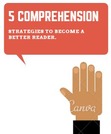
Finally, let's bring our parabolic arc to life!
- Subject:
- Applied Science
- Arts and Humanities
- Computer Science
- Graphic Arts
- Material Type:
- Lesson
- Provider:
- Khan Academy
- Provider Set:
- Pixar
- Author:
- Disney Pixar
- Khan Academy
- Date Added:
- 07/14/2021

Finally, let's bring our parabolic arc to life!

Students will find the volume of two rectangular prisms in order to find the total volume of a composite figure. This is a multi-step problem.

Now it's your turn to drive. In this video we'll present you with a casting challenge to complete using everything we've learned so far.

Students are reading to learn new information all the time. They should know different strategies to help them along the way. This is a great little lesson to do at the beginning of the school year and then after semester break again. Students should know the tools to help them be successful readers. This can be used for a teacher inservice or for parents who are new to helping thier own kids out during elearning / homework. 20 minutes

Review of how to write a function (starting with translation)

Why do we divide the number of combinations by the number of permutations?

This is a task neutral proficiency scale for 5-ESS1-1. Resources used to make this: NGSS.NSTA.org, Appendix E from the NextGenScience site and the actual performance expectations. This scale was created through collaboration with five elementary teachers.

A given phenomenon that will help drive units and instruction when instructing PEs: 5-ESS2-1, MS-PS1-4, MS-ESS2-4

Marketing and project management should always go hand in hand. If you are thinking of different ways to market your products and services, you also need to find methods to improve your marketing project management. Here are simple ways to help improve your marketing project management.

This video offers a brief review of 5 wonderful films that focus on specific topics in modern Latin American History.

This is a task from the Illustrative Mathematics website that is one part of a complete illustration of the standard to which it is aligned. Each task has at least one solution and some commentary that addresses important aspects of the task and its potential use.

This is a task from the Illustrative Mathematics website that is one part of a complete illustration of the standard to which it is aligned. Each task has at least one solution and some commentary that addresses important asects of the task and its potential use. Here are the first few lines of the commentary for this task: Materials The students will need grid paper and colored pencils; some color for the ships and (for example) red for explosions on their ships and their...

This is a task from the Illustrative Mathematics website that is one part of a complete illustration of the standard to which it is aligned. Each task has at least one solution and some commentary that addresses important asects of the task and its potential use. Here are the first few lines of the commentary for this task: Greetings from the Kalahari Desert in South Africa! In this activity, you will learn a lot about the Kalahari’s most playful residents: meerkats. The f...

This is a task from the Illustrative Mathematics website that is one part of a complete illustration of the standard to which it is aligned. Each task has at least one solution and some commentary that addresses important aspects of the task and its potential use.

This is a task from the Illustrative Mathematics website that is one part of a complete illustration of the standard to which it is aligned. Each task has at least one solution and some commentary that addresses important asects of the task and its potential use. Here are the first few lines of the commentary for this task: Niko and Carlos are studying parallelograms and trapezoids. They agree that a parallelogram is a quadrilateral with 2 pairs of parallel sides. Niko say...

In fifth grade unit 5, Reading Historical Fiction Book Clubs, students will be organized into reading clubs consisting of 3-5 students of similar reading levels as they read historical fiction text set made up of related historical fiction, informational text and primary sources (photographs, letters, posters etc.) How do readers read, analyze and interpret historical fiction text? to understand their historical fiction and the time period connected to the text.
Summarize a written text read aloud or information presented in diverse media and formats, including visually, quantitatively, and orally. Determine central ideas or themes of a text and analyze their development; summarize the key supporting details and ideas.

Learn how honey is made and used. This lesson includes learning objectives, material and resource lists, background information, activities, reading selections, writing assignments, a game, assessments, and support documents. See the Educator's Guide for more video links and recommended readings.

These lesson plans and activities were developed by Janine Darragh, Gina Petrie, and Stan Pichinevskiy and were previously located on the Reaching for English app. Created for K-12 English teachers in Nicaragua, the materials may be used and adapted for any country's specific context and needs.

This Unit is Transdisciplinary reinforcing the importance of the honeybee.

In this lesson, students will learn about the five love languages. Students will be able to identify them, and will learn how to apply them in various relationships. Students will take the quiz to learn their top love language and will reflect on how they will apply this information to bettering their life.